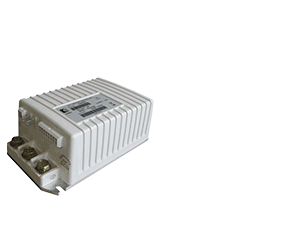Performing These Essential Maintenance Procedures Will Keep Your Batteries Running Longer
Golf car owners want nothing more than to jump into their vehicle and go at any given notice. But to do that, the batteries need to be in top condition, fully charged, and be able to deliver their maximum capacity. To get to that performance level, proper maintenance is essential, and when done correctly and consistently, it will also make your golf car power more cost-effective.
Start With a Better Battery
Most golf car owners know to recharge their batteries and check the water levels, but for the batteries to be in top shape and last longer, the first thing is to ensure you’re using the right batteries. According to Fred Wehmeyer, Senior VP of Engineering at U.S. Battery Manufacturing, if you’re doing all the proper maintenance and still have to buy new batteries every year, then you most likely don’t have the right batteries for your application and use.
If you’ve always shopped for the least expensive battery on the shelf, you’re sacrificing capacity and extended operation. Premium batteries may cost a little more initially, but they also include more lead plates which add to increased overall capacity. Capacity and how you use your golf car are major factors in battery longevity. According to Wehmeyer, batteries with greater capacity provide longer run times and/or lower depth of discharge (DOD) between charging cycles. This is a key element, especially if you constantly exhaust your battery power beyond 50 percent DOD.
Limit Your DOD to Less Than 50% Maximum
One of the best ways to lengthen the service life of your deep-cycle batteries is to limit the depth of discharge (DOD) to 50% of the battery pack’s capacity. To determine when your golf car batteries reach 50% DOD, check their state of charge (SOC) with a hydrometer. If you’re reaching 50% or more by using your golf car normally, you can benefit from batteries with more capacity. In addition, charging your batteries more often, and allowing your charger to complete a full charge will also lengthen battery life. You can also check to see if they are fully charged with the hydrometer.
Water Your Batteries after Charging
Although this seems like a simple task that most know about, many golf cart batteries go unattended for long periods. After charging, the electrolyte in the battery cells may have lost water from electrolysis. It’s essential to fill each cell with distilled water (after a charge, not before) to the manufacturer’s recommended level. The batteries should never have the cell plates exposed due to low electrolyte.
Perform a Monthly Equalization Charge
An equalization charge prevents electrolyte stratification. This is a condition that occurs when the acid in the electrolyte that is produced during charging, fails to mix completely with the rest of the electrolyte and settles to the bottom of the cell. The method used to equalize batteries is as easy as using a high-quality battery charger that features an automatic equalizing mode or by manually initiating an equalization charge. Wait until the charger terminates automatically, and then restart the charging process manually by disconnecting AC power and reconnecting. The charger should restart and extend the charge cycle by several hours.
Fully Charge Batteries before Storage
When you put your golf cart into storage for more than a month, make sure the batteries are fully charged. It’s especially important during the winter months, as the fully charged electrolyte will keep the batteries from freezing and prevent damage to the battery case. At other times, keep the vehicle and/or batteries in a cool and dry location. Occasionally, check the SOC of the batteries and recharge as necessary. If using an automatic charger, leave it plugged in during storage. The automatic feature will maintain the SOC of the batteries during storage. Otherwise, when taking them out of storage, give them a full charge before use.
Although this may seem like a lot to remember and do consistently, the facts are that they work extremely well. The best examples come from new and used golf cart dealers who are seeing the benefits of providing training for their customers on these tips and maintenance procedures. Many report that they have had customers get an average of five to seven years out of their batteries and can dramatically reduce the cost of owning and operating a battery-powered golf cart over the long haul. For more information on battery maintenance and selecting the right battery for a variety of applications, visit www.usbattery.com.




















